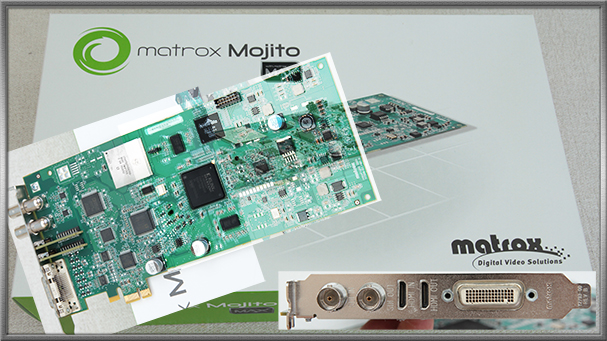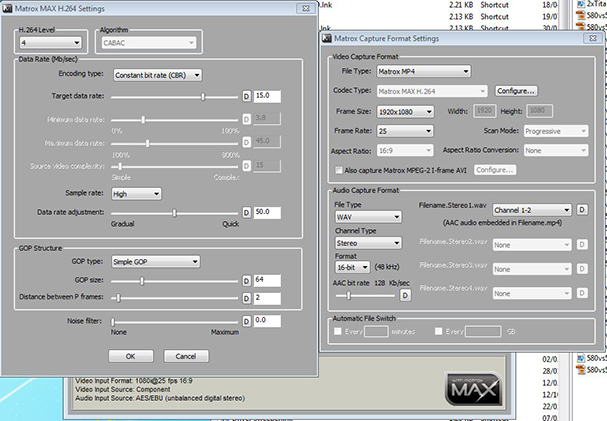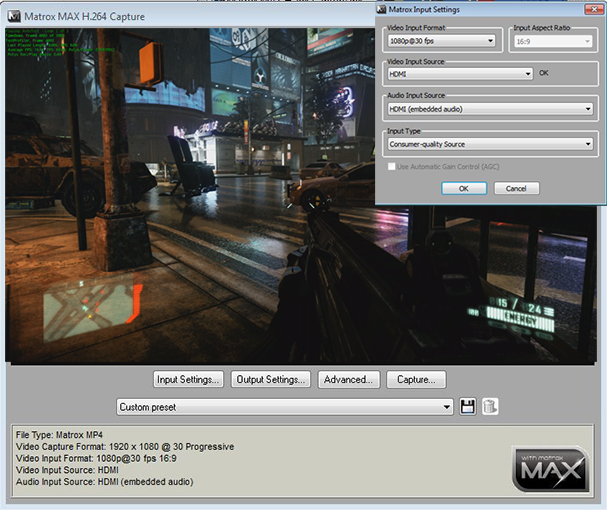A Captivating Experience.
Matrox Mojito
Matrox’s Canadian headquarters incorporated two distinct business. The first and best known, Matrox Graphics Inc, began in the late 1970s to amass a history replete with diverse and visionary graphics cards, not least some of the earliest 3d accelerators. The second, Matrox Electronics System’s Ltd, consisted of two sub-divisions, Matrox “Imaging”, which specialized in frame gathering and image inspection tools and Matrox Video Systems, a renowned force in the annuls of sophisticated video artisanship.
In a review focusing on largely affordable methods of achieving a singular goal, one might well question the inclusion of this beast of a card, which was essentially a fully qualified a/v production powerhouse destined for integration with Adobe Premier.
Having relied on one to serve merely as a real time preview device in Edius, and still having it at my disposal, it would surely have verged on sin not to explore its comprehensive abilities as a capture card and judge whether or not such an augmented investment could yield the perfect long term aid.

The luxurious suite of software included with the Mojito is beyond doubt the most furnished and dependable of the bunch, bursting at the seams with a cornucopia of advanced, finely tuneable settings and a towering bit rate ceiling of 50Mbps for real-time hardware assisted MPEG4 content creation. Further format choices comprised of Matrox’s proprietary MPEG2 “I-Frame” codec and uncompressed 8 and 10bit AVI, for those with more blank space than Space.

The card’s range of ingestible resolutions was respectable but the stability of its HDMI input was a revelation when paired off against the Black Magic and superior to both the Colossus and Live Gamer HD.
Also worth referencing are the Mojito’s exceptional sound harvesting skills, over and above preserving upto 8 channels of audio embedded in an HDMI signal, there was also the option of capturing via analogue stereo XLR, or dedicated digital AES/EBU and SPDif inputs. Combining digital and analogue video and audio sources – was also possible.

Under testing, the card performed with endearing poise, even when installed in the same system as the target application. Frame rates were buttery smooth and colour definition as rich and vibrant as the Black magic, albeit at a marginally higher rate of binary interest (hard drive space…).
Matrox Mojito Unigine Test
Get the Flash Player to see this player.One glaring negative, the Mojito’s refusal to interpret a signal above 30hz at 1080p meant it suffered the same impediment as Datapath’s card encountered at 2160p, a 30fps brick wall, truly tragic for what might otherwise have reaped the gold star.
Pros.
- The most stable and feature rich on show.
- Hardware encoding.
- Advanced onboard audio capture facilities make sync issues practically impossible.
- Extensive software with detailed and useful settings. High maximum bit rate.
Cons.
- Lack of 1080p 60hz support, will only pass a 30hz signal
- You have to pay for it.




